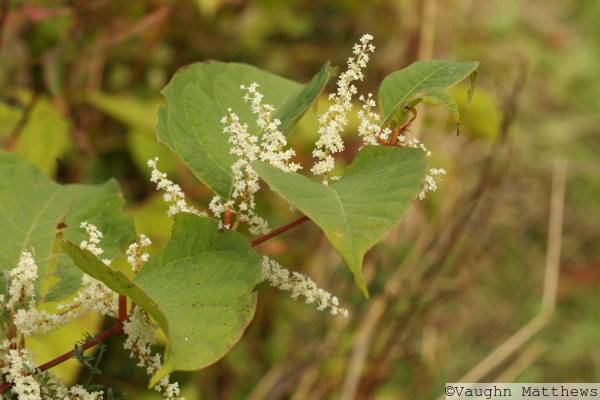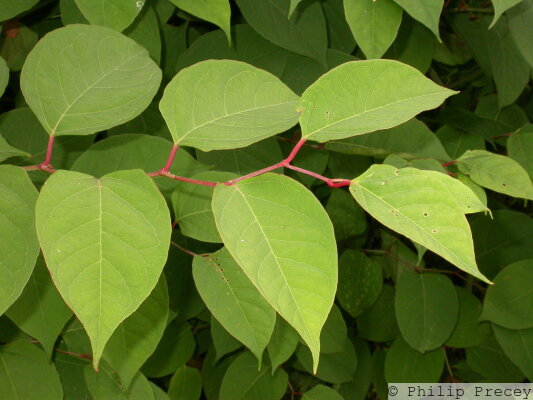Japanese Knotweed
Fallopia japonica
<
>


 Type
Type Plant: INNS
Plant: INNS Status
Status Invasive
Invasive Common
Common Widespread
Widespread Season
Season Spring
Spring Summer
Summer Autumn
Autumn Winter
Winter Anywhere along the canal, in the towpath verges.
Probably the most notorious of the invasive non-native plants in the UK, Japanese Knotweed thrives on riverbanks, canal towpaths, roadside verges and waste-grounds, where it prevents native species from growing.
Introduced from Japan in the 19th century as a garden plant, Japanese Knotweed soon became established in the wild, running rampant and outcompeting countless other native wildflowers and plants due to its fast-growing, invasive and resilient nature and is often used to highlight the issues of introducing 'alien' species.
Numerous organisations, including Montgomeryshire Wildlife Trust, are committed to its removal. Glandwr Cymru, Canal & River Trust in Wales, who own and manage the Montgomery Canal, do considerable work to control and try to eradicate Japanese Knotweed and other invasive species including Giant Hogweed and Water Fern.
Japanese Knotweed is a very tall plant with large, triangular leaves and hollow red-pink coloured stems that resemble bamboo. It also has small white tufty flowers that appear in late summer and autumn.


